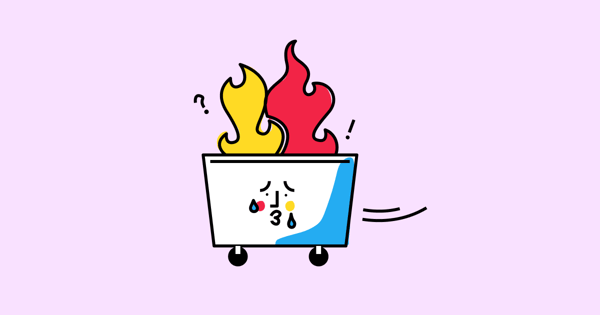Email has been and continues to be an absolute workhorse for marketers.
Research from the Direct Marketing Association and Demand Metric found, “Email had a median ROI of 122 percent—more than four times higher than other marketing formats including social media, direct mail, and paid search.”
So it definitely gets the job done.
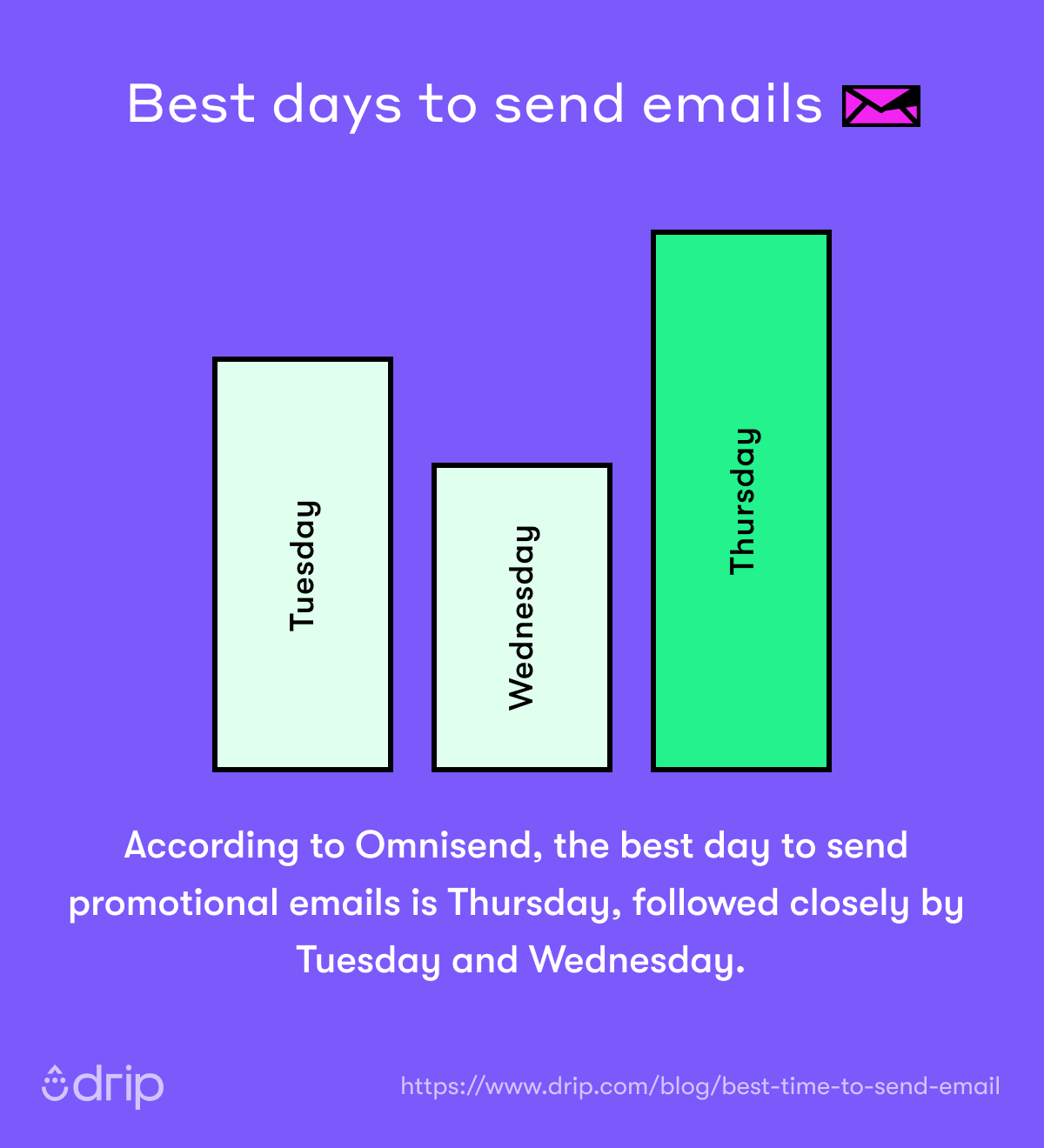 But there’s an issue that all email marketers must contend with and that’s falling into the dreaded black hole that is the spam folder.
But there’s an issue that all email marketers must contend with and that’s falling into the dreaded black hole that is the spam folder.
Return Path’s 2020 Deliverability Benchmark Report discovered that an average 8 percent of all commercial emails in the United States wind up as spam.
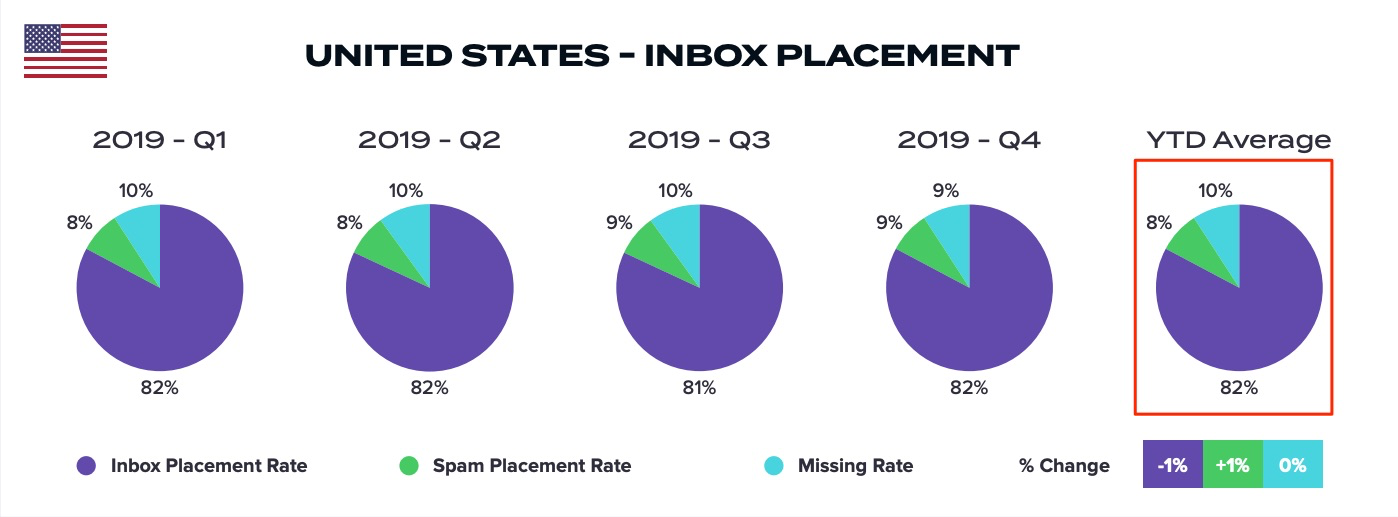 And let’s be honest. An email is almost always a goner at this point.
And let’s be honest. An email is almost always a goner at this point.
I mean how many people are actually going to take the time to sift through their spam folder to see if maybe, just maybe your email was inadvertently diverted there?
My guess would be zero.
This is hugely problematic because the average open rate is only 32 percent and even lower for certain industries.
So when you factor in emails going to spam, that number diminishes even more.
Right now I’m going to discuss some common reasons why emails go to spam and how to ensure that yours don’t wind up there.
The 10 Most Common Reasons Why Emails Go To Spam (2023):
- What is Spam? The CAN-SPAM Act
- Why Your Emails Are Going to Spam
- 1. You weren’t given permission
- 2. Sender information is inaccurate
- 3. There’s no physical postal address
- 4. Using spam trigger words
- 5. Your subject line is weak
- 6. Including too many attachments
- 7. Incorporating a large image with minimal text
- 8. Absence of accessible unsubscribing option
- 9. Sending emails to inactive addresses
- 10. Using incorrect spelling and grammar
- How to Test for Spamminess
- Don't forget IP Warming when Changing ISPs
Before delving into each reason, we need to discuss...
The CAN-SPAM Act
First, let me briefly touch on the CAN-SPAM Act.
This is a law that was enacted back in 2003 and sets national standards on commercial email.
If you’re unfamiliar with it, I recommend taking a look at the CAN-SPAM Act compliance guide from the FTC.
This highlights the main requirements and outlines non-compliance issues that can get you into trouble. It’s fairly short but will quickly get up to speed.
Some areas it touches on include not using deceptive email subject lines, including a physical mailing address, telling recipients how to opt-out, and honoring opt-out requests.
Considering the fact that violations can carry penalties of up to $41,484, you’ll want to be knowledgeable about the ins and outs of the CAN-SPAM Act.
Besides the ugly potential penalties, failing to comply with these requirements could get your emails sent to spam.
So this is definitely something to be aware of, especially if you’re new to email marketing.
Now let’s get down to the nitty-gritty.
1. You Weren’t Given Permission
The first rule of email marketing is to always have permission before sending an email.
It should go without saying that you should never buy a list of emails or obtain them through any other unscrupulous means.
Not only is it unethical, but it’s also ineffective and can potentially land you in some hot legal water.
Think about it this way—email is the single best intent-based channel that exists. If someone signed up with your brand, they want to hear from you.
Why would you risk it all to send to people who don’t want to hear from you?
Because trust me, if you’ve purchased an email list, no matter what the seller promised you, they don’t want to hear from you.
So email addresses should only be added when someone willingly opts-in. It’s really that simple.
Otherwise, there’s a good chance that it will end up as spam. Or in a worst-case scenario, you could be subject to a fine.
If you use popups for collecting emails, you might want to add a checkbox asking visitors to agree to your terms and conditions.
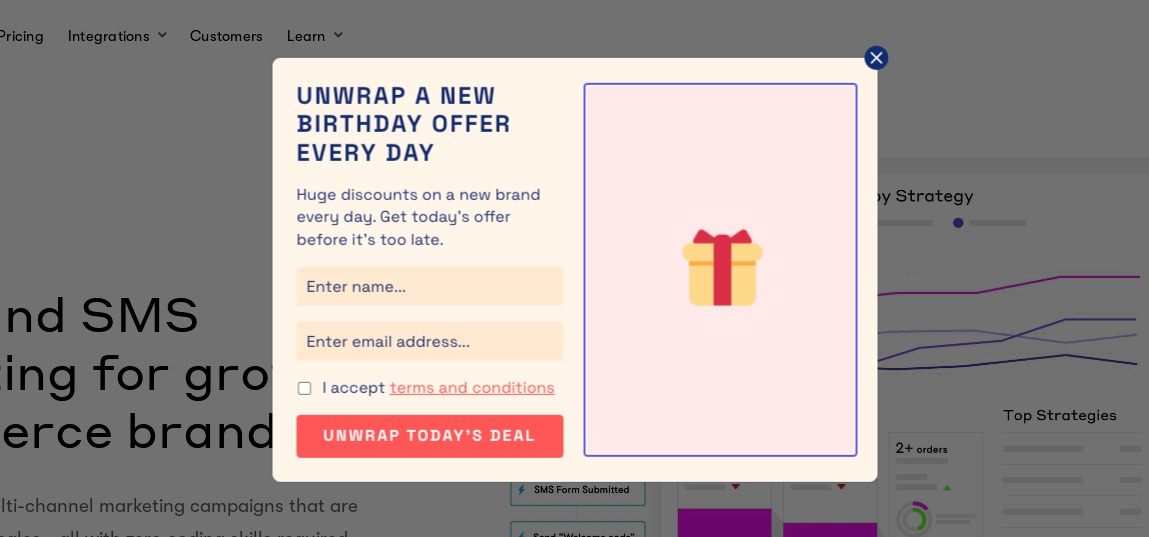 Or, as a minimum, a line of copy below a form input field, informing visitors that you will email them as we do on our blog:
Or, as a minimum, a line of copy below a form input field, informing visitors that you will email them as we do on our blog:
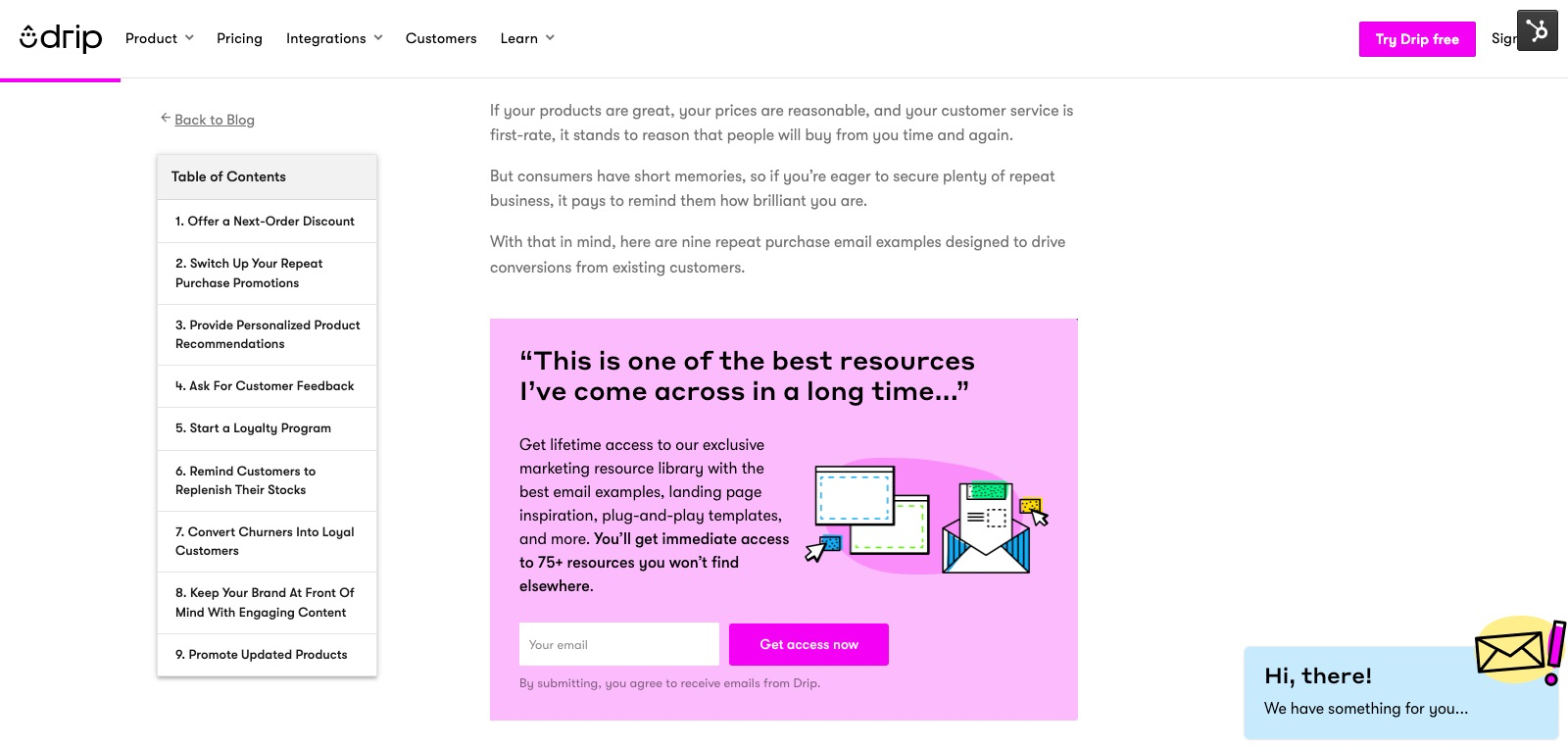
2. The Sender Information is Inaccurate
Here’s what the FTC has to say about the sender's information.
“Your ‘From,’ ‘To,’ ‘Reply-To,’ and routing information—including the originating domain name and email address—must be accurate and identify the person or business who initiated the message.”
In other words, you must clearly state who you are (or who your company is) and not include any inaccurate information that could mislead someone.
For example, the sender information on one of our emails might say “Seray from Drip.”

3. There’s No Physical Address
This may be surprising to some email marketers.
But the FTC also states, “Your message must include your valid physical postal address. This can be your current street address, a post office box you’ve registered with the U.S. Postal Service, or a private mailbox you’ve registered with a commercial mail receiving agency established under Postal Service regulations.”
Otherwise, you’re not following their requirements and your email could be marked as spam.
It’s all about having some degree of traceability.
So make sure to set a default postal address in your email provider.
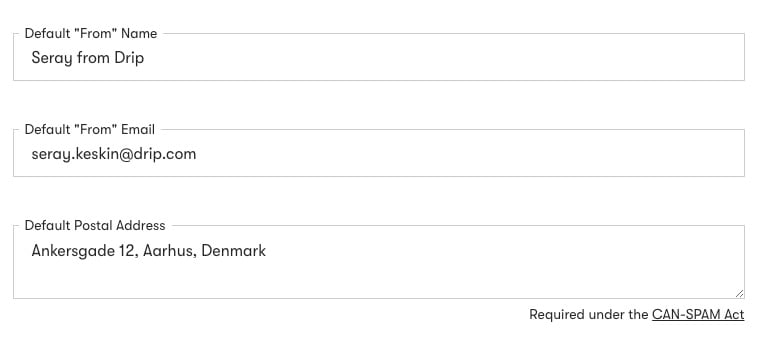 You’ll notice that nearly all legit businesses include their physical address toward the bottom of each email.
You’ll notice that nearly all legit businesses include their physical address toward the bottom of each email.
Here’s an example from lifestyle store Scout and Co., complete with links to its social media profiles.
 It doesn’t have to be conspicuous, it just has to be there.
It doesn’t have to be conspicuous, it just has to be there.
The ones who most commonly make this ecommerce mistake are the small business owners who work out of their homes simply because they don’t want to have their home address advertised to the masses.
And that’s understandable.
In this case, your best bet is to get a P.O. box that you can use in lieu of your home address.
4. You’re Using Spam Trigger Words
Automational explains, “Email spam filters still look at the content within your email to decide whether it goes into the spam folder of your customer’s inbox.”
Saying things like “Double your income!” or “You’re a Winner!” is a surefire way to gain unwanted attention from those filters.
If they notice questionable “trigger words,” it’s a red flag and you’re email is likely to be sent to spam even if you have the best of intentions.
So it’s important to know which specific words to avoid like the ones listed by the Digital Training Institute.
These are a good starting point.
But for an even more comprehensive list, check out these 438 email spam trigger words from Automational.
This brings me to my next point.
5. Your Subject Is Weak
An email’s subject is everything.
Besides the name of the sender, it’s the only thing a recipient has to go on when deciding whether it’s legit or not and whether they should open it.
Convince and Convert even says, “69 percent of email recipients report email as spam based solely on the subject line.”
So you need to nail it.
Besides steering clear of trigger words, there are some other subject line best practices you’ll want to follow to keep your emails out of the spam abyss.
These include:
- Not using excessive capital letters, which indicates that you’re shouting at recipients
- Not going overboard with exclamation points
- Not making false promises
- Not sounding overly pushy or salesy
When coming up with a headline, I recommend putting yourself in your subscribers’ shoes.
In our experience, a subject is best when it’s direct and to the point, as Morphe demonstrated in one of its recent promotion emails:
 Is there any way that someone might think that your email is spam based on the headline?
Is there any way that someone might think that your email is spam based on the headline?
If so, tweak it until it’s presentable.
6. You’ve Included Attachments
Attachments should be avoided like the plague for two reasons.
First, they alert spam filters and reduce the chances of your email making it to the recipient’s inbox.
For all they know, an attachment could be carrying some hardcore virus that’s just waiting to overtake an unsuspecting victim’s device.
Second, they can slow down the load time of the email, especially if they’re big and bulky.
Generally speaking, there’s no need to send a commercial email with an attachment.
All of the information, offer and CTA could and should be included right in the body.
But if you want to include an attachment—say, a video—you could take a screenshot of the first frame of your video, insert it into the email and link the image to wherever the video is hosted online.
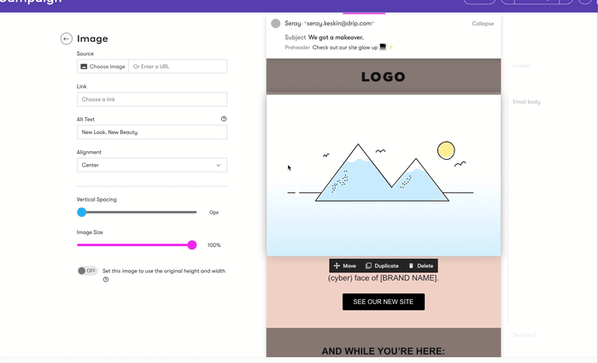
7. There’s a Large Image with Minimal Text
Incorporating visuals into marketing campaigns has never been more popular.
In fact, creating visual content is a top priority for 55 percent of B2C content creators.
So it’s easy to see why many marketers would want their emails to be image-heavy. It’s simply a matter of aesthetics.
And some of the best, most professional-looking emails I see contain images.
This one from hobby boutique Rito is a great example.
 But Email on Acid explains that using a large image with minimal text can sometimes get you into trouble.
But Email on Acid explains that using a large image with minimal text can sometimes get you into trouble.
Here’s what they have to say on the matter:
The idea is that image-heavy emails without much text can raise a red flag for spam filters. This theory was formulated because spammers sometimes display information in large images instead of text so that the filter programs cannot ‘read’ the content.
And this makes sense, and I can see why they would be wary of image-centric emails.
But at the end of the day, spam filters could easily misconstrue this type of email and think you’re a scammer when in reality you’re simply trying to give subscribers some eye candy.
So you need to be aware of this fact.
Now, this isn’t to say that you shouldn’t use images. That’s not what I’m saying at all.
But you should be aware of your text-to-image ratio and strive for 60/40, meaning that your email should be roughly 60 percent text and 40 percent image.
Stick with this formula and you should be in good shape. Of course, many email service providers come with pre-built templates to mitigate the above problem, and Drip is certainly no exception.
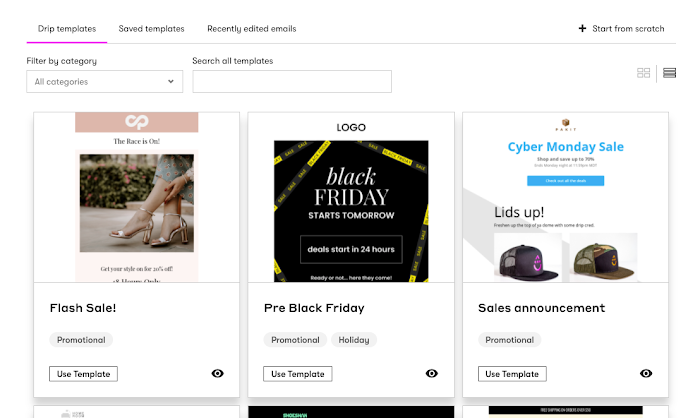
8. There’s No Opt-Out Link
Have you ever found yourself in a situation where you absolutely didn’t want to receive any more emails from a particular company, but there was no way to unsubscribe?
I have and it’s super irritating.
Best-case scenario, you annoy subscribers or wind up in the spam folder.
Worst-case scenario, you actually get fined by the FTC.
Either way, it’s a lose-lose situation.
So it’s vital (not to mention legally required) to have an opt-out link like this one from Drunk Elephant.
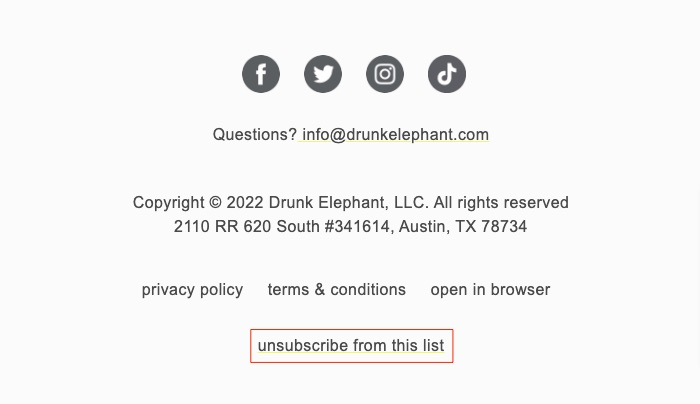 I should mention here that not all unsubscribes are created equal. Sometimes, a person wants to unsubscribe, not from a newsletter, necessarily, but from the number of emails they receive.
I should mention here that not all unsubscribes are created equal. Sometimes, a person wants to unsubscribe, not from a newsletter, necessarily, but from the number of emails they receive.
In instances where people want to opt out from certain emails, it's worth updating the unsubscribe link to manage preferences as seen in the image below.
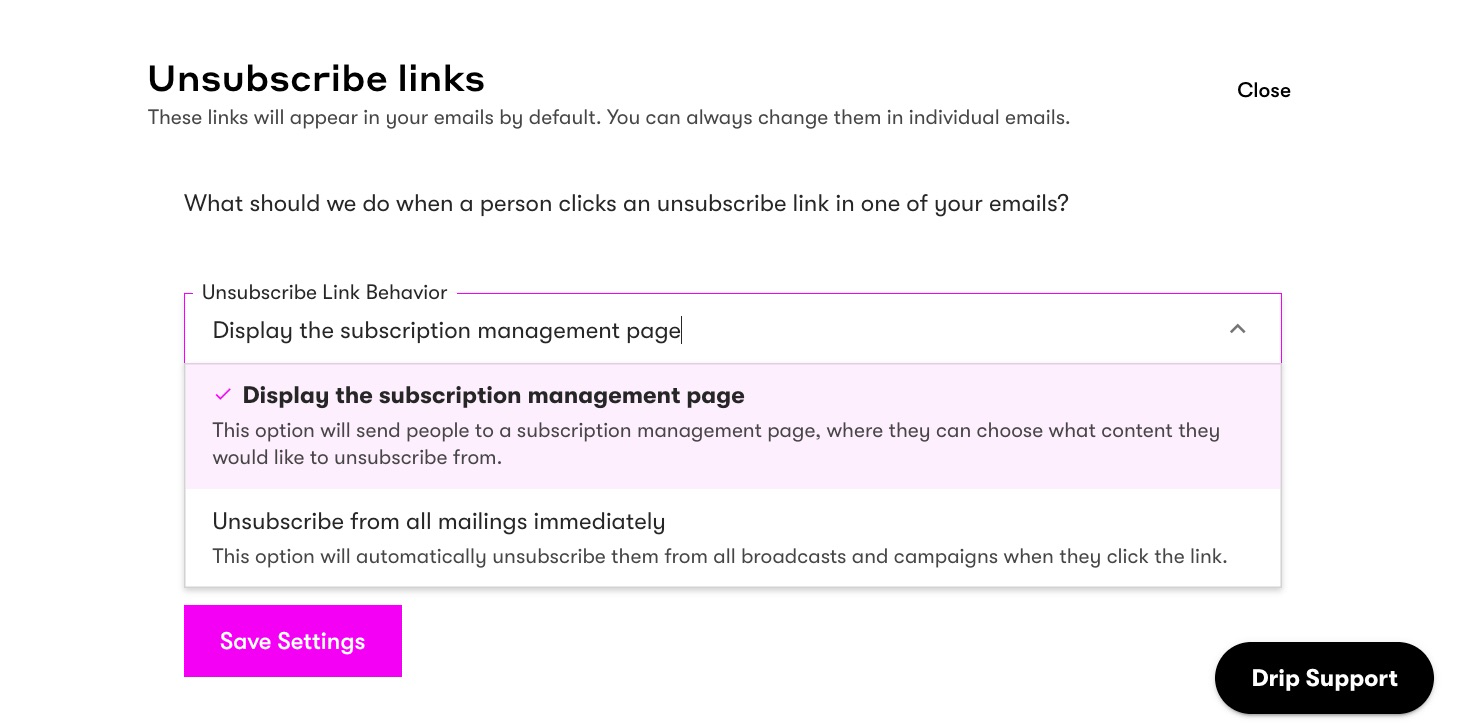
9. You’re Sending Emails to Inactive Addresses
I think we’ve all seen a message that looks like this at some point.
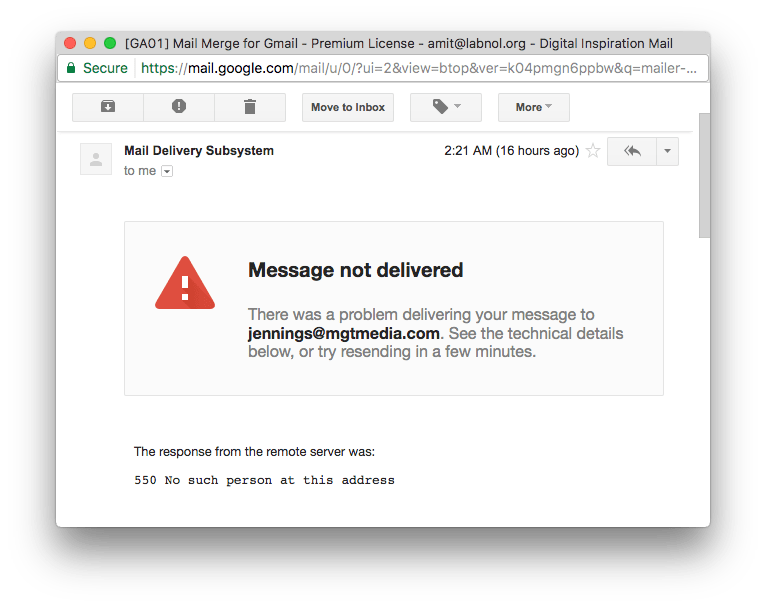 This means that the email was sent to an inactive address and therefore not delivered.
This means that the email was sent to an inactive address and therefore not delivered.
If you do this on a large scale and consistently send emails to inactive email addresses, spam filters will often penalize your domain or ISP.
In turn, this greatly increases the odds of your emails going to spam.
The solution?
Make sure that you’re continually “cleaning” your email list and deleting inactive addresses.
One best practice we recommend is “pruning” subscribers based on the number of unopened emails (Count-Based) or the number of inactive days (Time-Based) as a subscriber.
Count-Based returns all people that haven’t opened or clicked any of their last "x" number of emails. The maximum number of emails for a Count-Based operation is 15 emails.
Time-Based, by contrast, returns people that haven't opened or clicked an email in the last "x" number of days. The maximum number of days for a Time-Based operation is 90 days.
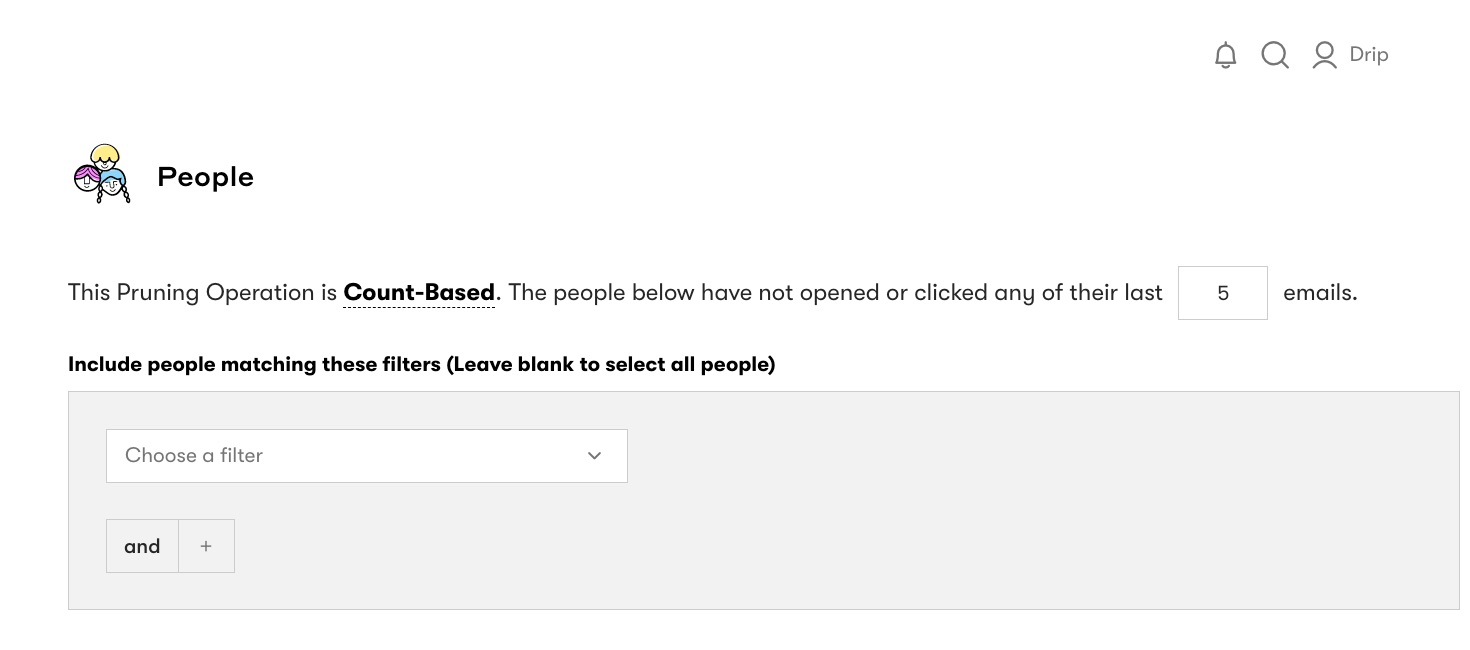
10. You Have Incorrect Spelling and Grammar
Josh Pyorre writes in Cisco Umbrella about the surprising frequency of spelling and grammatical errors that occur in phishing emails.
He says that this is often the result of non-native English speaking hackers using translating tools to convert their text into English. And they come out sounding strange, to say the least.
So spam filters are on high alert, and spelling and grammatical errors could land your email in the spam folder.
Not to mention, you’re going to look unprofessional in the eyes of your audience.
So you need to be extra diligent about double and even triple-checking each email before sending it out.
Although email spell checks are good for catching most things, they certainly won’t catch everything.
Sometimes good-old fashioned proofreading by a human is your best bet for catching issues.
Always send a test email to a colleague or yourself before scheduling your email.
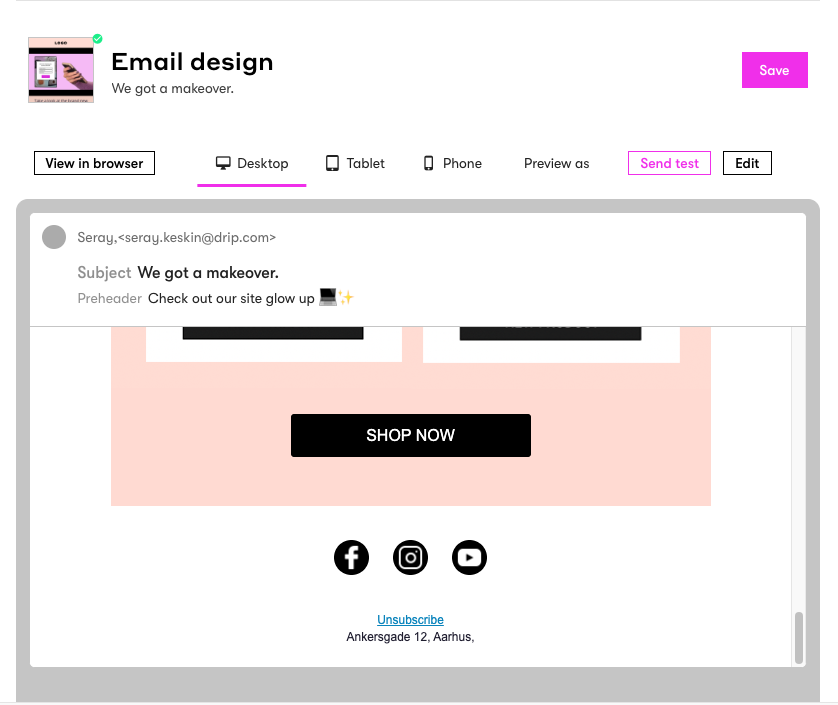
How to Test for Spamminess
At this point, you should have a pretty good idea of what not to do.
But there’s one tool that I want to point out, and it’s called Mail Tester.
Here’s how it works.
Take an email that you plan on sending to your subscribers and send it to Mail Tester first.
Then check your score.
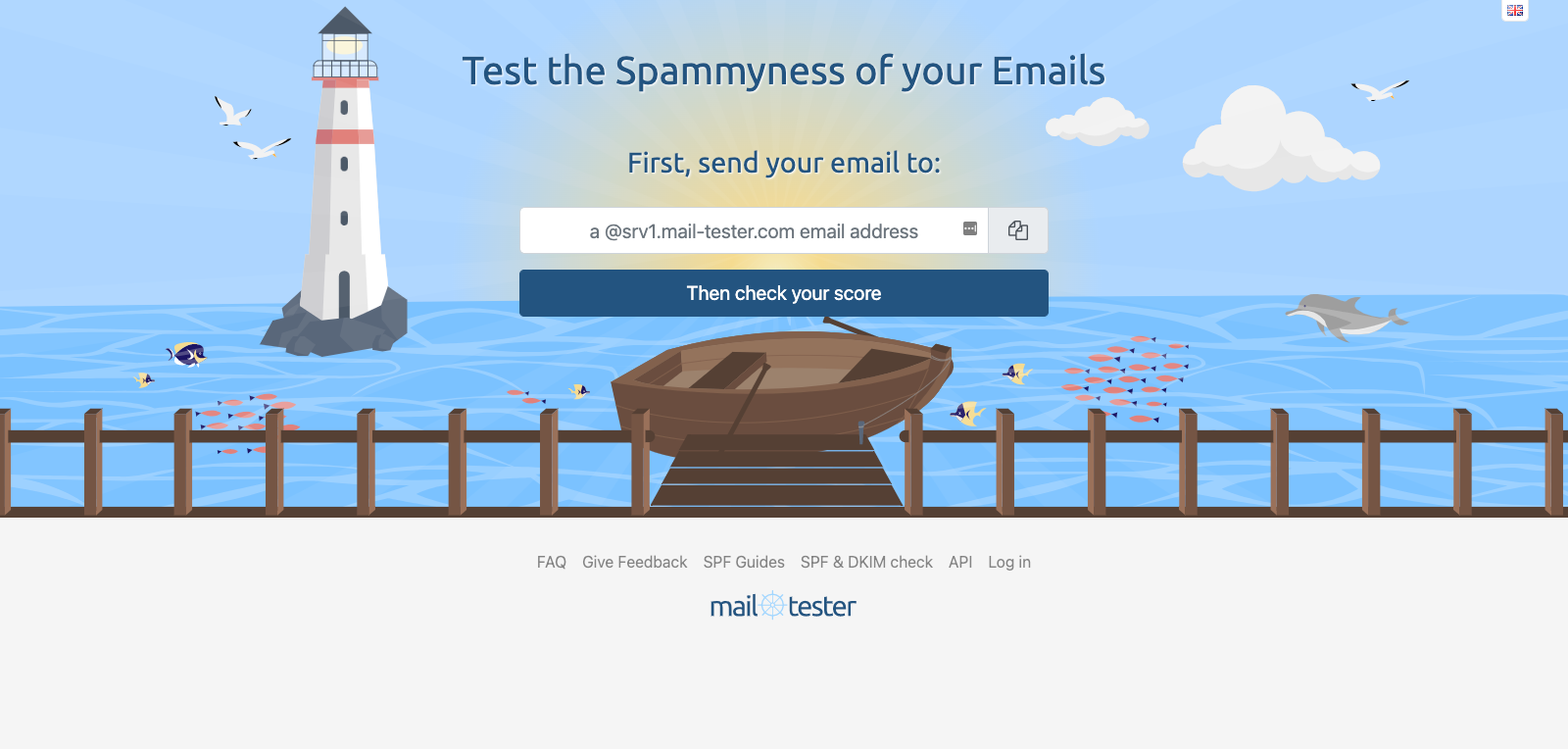 From there, Mail Tester will give your email a score based on its “spamminess.”
From there, Mail Tester will give your email a score based on its “spamminess.”
 Scroll down just a bit, and you’ll get more details on what’s good and what could use some improvement.
Scroll down just a bit, and you’ll get more details on what’s good and what could use some improvement.
 I find this to be a great way to quickly figure out any mistakes you’re making so that you can promptly fix them.
I find this to be a great way to quickly figure out any mistakes you’re making so that you can promptly fix them.
Don’t Forget IP Warming When Changing ISPs
ISPs and email service providers (ESPs) closely monitor the behavior of senders to prevent spam and ensure the deliverability of legitimate emails to users' inboxes.
And when you switch ISPs or start sending emails from a new IP address, you essentially start with a clean slate in terms of your sending reputation.
A poor sender reputation can lead to your emails being filtered into spam folders or being blocked altogether, which can derail all your email marketing efforts.
That’s where IP warming steps in!
It helps you build and maintain a good sender reputation for your email communications, when you switch ISPs.
Generally, it can take several weeks to complete the warming process and gradually increase your email volume to normal levels. You must follow best practices during this period and avoid sudden spikes in email activity, as this can (and most likely will) raise red flags with ISPs.
So, stay away from cold email blasting right away because some online guru told you so.
Remember that maintaining a good sender reputation goes beyond just IP warming, and you must:
- Provide valuable content
- Have a clear and straightforward opt-in process
- Promptly handle user preferences
- Offer an easily accessible unsubscribing option, and more
Why IP Warming Is A Must When Changing ISPs
- Establishing trust: ISPs are wary of new IP addresses because they’re often associated with spammers who create new accounts to avoid detection. And IP warming allows you to gradually build trust with the (new) ISP by demonstrating responsible and legitimate email sending practices.
- Gradual ramp-up: IP warming involves gradually increasing your email sending volume over a period of time. By starting with a small volume of emails and then slowly increasing it, you show ISPs that you’re a legitimate sender with real recipients.
- Monitoring and adaptation: During the IP warming process, you closely monitor your email performance and adjust your sending practices accordingly. If issues pop up — such as high bounce rates or spam complaints — you can identify and address them before your email sending volume hits full capacity.
- Avoiding blacklisting: Sending a large volume of emails from a new IP address without warming it up can trigger spam filters and lead to your IP being blacklisted. And once your IP is blacklisted, it becomes challenging to get emails delivered to users of that ISP, and it can take a considerable amount of time and effort to restore your sender reputation.
- Maintaining deliverability: You need a good sender reputation to maintain high deliverability rates and ensure that your emails reach your recipients' inboxes.
How To Do IP Warming Right
- Assess your sending history: Before switching ISPs, review your email sending history with the previous ISP. Identify your average email volume and engagement metrics — like open rates, click-through rates, bounce rates, and spam complaints. This information will serve as a baseline for your IP warming plan.
- Avoid purchased lists: Never use purchased or rented email lists, as they often contain stale or low-quality addresses that can harm your IP reputation.
- Clean your email list: Before starting the warming process, ensure that your email list is up-to-date and cleaned of invalid or inactive email addresses to avoid high bounce rates.
- Create a warming plan: Develop a comprehensive warming plan that outlines the schedule for gradually increasing your email sending volume over time — which will of course be subject to changes in real-time as you start sending emails. The duration and specific volume increments will depend on factors like your sending history and the size of your email list.
- Authenticate your emails: Implement authentication mechanisms like SPF (Sender Policy Framework), DKIM (DomainKeys Identified Mail), and DMARC (Domain-based Message Authentication, Reporting, and Conformance) to improve deliverability and show ISPs that you are a legitimate sender.
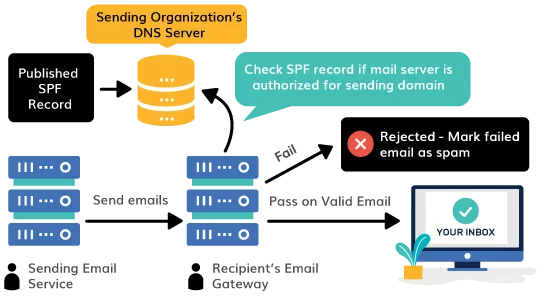
- Start with low volume: Begin by sending emails to a small portion of your email list, like 5%-10% of your email list size. Choose your most engaged subscribers for the initial sends. This might include those who have recently interacted with your emails or have a history of opening and clicking on your messages.
- Monitor performance: Keep a close eye on your email performance metrics during the warming process. Pay special attention to bounce rates and spam complaints. This data will help you assess the health of your sender reputation.
- Gradually increase volume: As your performance metrics remain stable and positive, gradually increase the volume of emails you send. This increase should follow the warming plan you created earlier. Typically, you might increase the volume by 10%-20% every few days, but the exact increments will depend on your specific circumstances. Usually, the warming process can take 4-6 weeks to complete.
- Segment your email list: As you increase sending volume, segment your email list based on engagement levels. Send to the most active and responsive segments first before moving on to less engaged list members.
- Watch out for red flags: Be alert for any signs of deliverability issues during the warming process. If you notice a sudden drop in engagement or a spike in spam complaints or bounces, it may indicate a problem that needs to be addressed immediately.
- Warm up each campaign type: If you have different types of email campaigns — like newsletters, promotional offers, transactional emails — warm up each type individually.
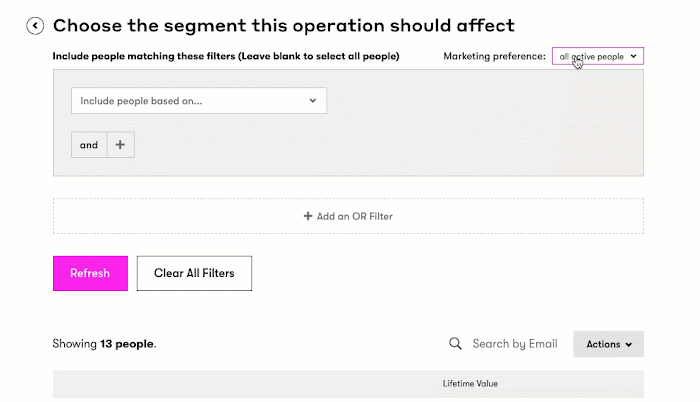
Conclusion
So you’re not a spammer looking to hustle customers.
You’re simply a conscientious email marketer looking to connect with leads and nurture them until they ultimately make a purchase.
But spam filters don’t necessarily know that.
And most people have very little patience dealing with any email that comes across as being the least bit spammy.
I know I do.
In order to get your emails read, you must first get them opened.
To do that, it’s essential that your emails aren’t sent to spam.
While there are a plethora of reasons why this happens, the issues I’ve outlined here tend to be some of the most common.
Fortunately, they’re preventable.
By familiarizing yourself with the CAN-SPAM Act and understanding the logic behind spam filters as well as the thought process of actual human readers, you should be able to eliminate any spamminess.
As a result, more of your emails will end up where they’re supposed to—in inboxes.
Finally, try out a marketing automation platform like Drip to send highly deliverable emails, and you'll see the difference.
